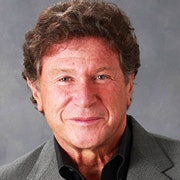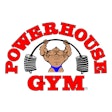Fact: The population of the United States is aging.
The average age of Americans is growing every year. Baby Boomers — the largest age demographic in the US at 65 million members — are rapidly entering the part of life that is considered “old age.” But don’t believe for one second that these "old-timers" are letting go of the youthful irreverence and zeal that came to define their generation.

The session focused on the general failure of health clubs to cater towards an aging population — or “ageless” population, as Dychtwald called it. Dychtwald addressed the questions of “Who exactly are these Baby Boomers, and how can we market to them and cater to their needs and tastes?”
First, Dychtwald emphasized that Baby Boomers might be older, but they refuse to be identified as such.
Dychtwald described most marketing over the past half-century, including health club marketing, as “Menudo Marketing,” a dated reference to a latino boy band that subbed out members whenever they grew too old. Even though young people are less likely to be employed or have any money, clubs often only market to the young demographic. Whenever someone reaches a certain age, clubs simply stop marketing to them or facilitating to their needs.
“If clubs do any marketing to the older population, it is often labeled as being for seniors,” said Dychtwald. “This is just a huge mistake. These people don’t really align themselves with, being ‘senior’ or ‘elderly’.”
“It is important to remember that these people aren’t old, the way we remember old people being,” he said. “People in their 50s, 60s, and 70s are active. They won’t be moved by pictures of immobile geriatrics. You need to understand this group and you need to have them in your clubs.”
This demographic of the population has much more disposable income, and are often retired, meaning they have much more disposable time.
“Empty nesters are the most missed opportunity in the fitness industry,” said Dychtwald. “They now have money and time that they used to spend on their kids, and are now willing to reinvest on themselves. They realize that unlike their parents and grandparents, they may have 20 to 30 good years of retirement and want to be healthy enough to enjoy it.”
With such a resource-rich portion of the population looking to stay healthy, why does such a disconnect between many independent health clubs today and the Baby Boomers exist?
“Clubs often just don’t know how to speak to this demographic as it ages,” says Dychtwald. “They are looking to rejuvenate, re-energize and feel good. They are not interested in being young, but looking and feeling young.”
But, to capitalize on this, clubs may need to re-think their marketing and membership strategies to attract and retain this group.
“People over sixty grew up with communality and enjoy being with others in groups,” he said. “It may be time to offer rejuvenation programs or healthy aging groups rather than offering a straight membership. Also, this group is hard-working, and likes measurables, so a little competition or gamification can go a long way.”
Constant self-improvement is important to Baby Boomers. They are hyper-competitive, and always looking to get better. Much of this drive for self-improvement stems from altruistic purposes that are less tangible than the vanity-driven younger gym goers. “Baby Boomers are more focused on holistic wellness than cosmetic improvement.”
Because this generation is composed of empty-nesters, they are no longer just working out and leaving, but are open to building a community. While they had kids in the house, most social life and daily routine was kid-centric. Now Baby Boomers can also re-invest time into themselves and their social lives. They look to places such as their gym around which to build their social lives.
Boomer Core Traits
- Anti-Authority
- Rule Breakers
- Individualistic (but also social)
- Idealistic
- Psycho-Dramatic
With time, money and energy to burn, it's time health clubs start reaching out to this demographic.
































